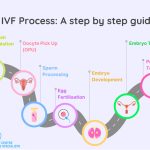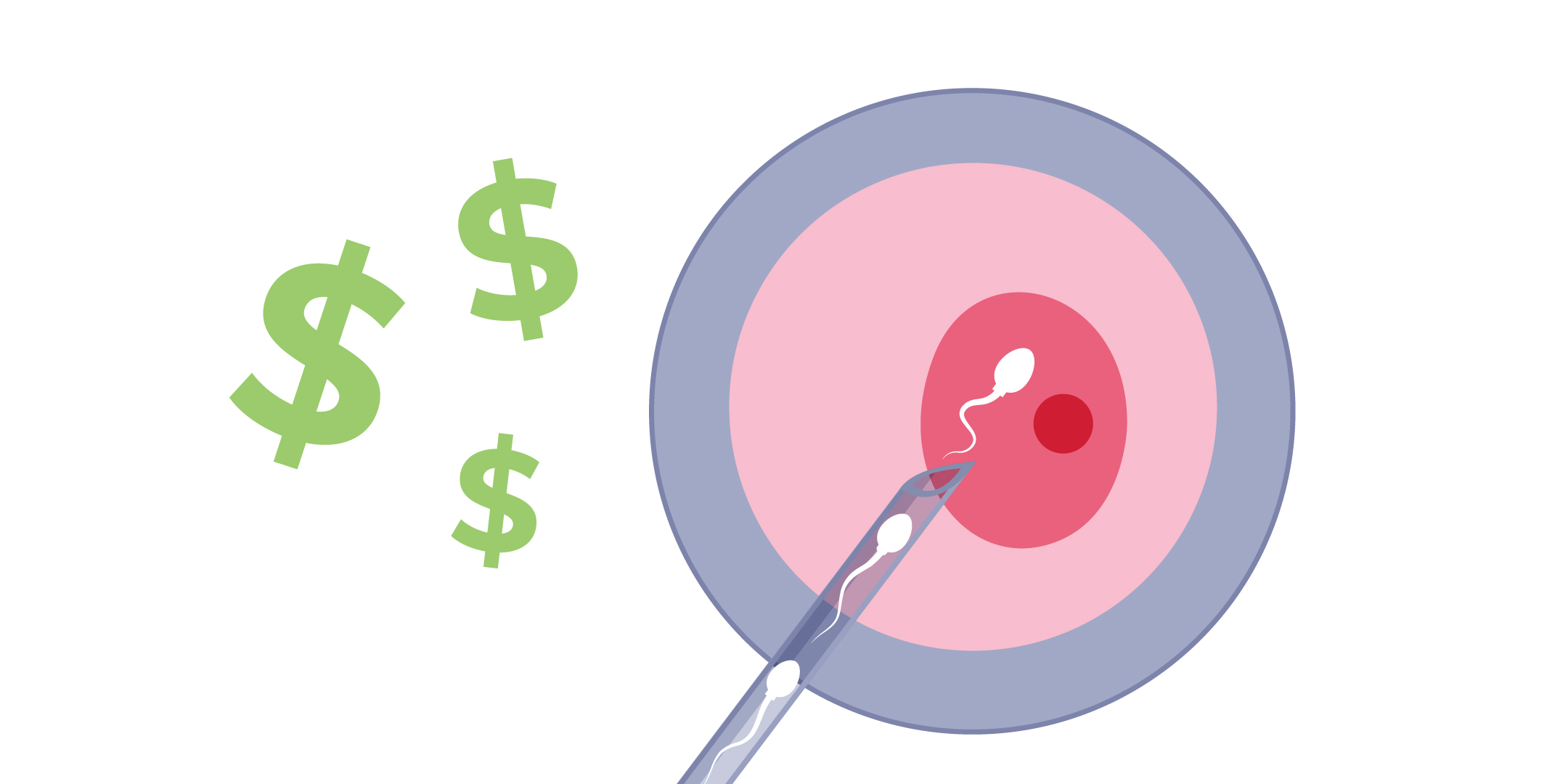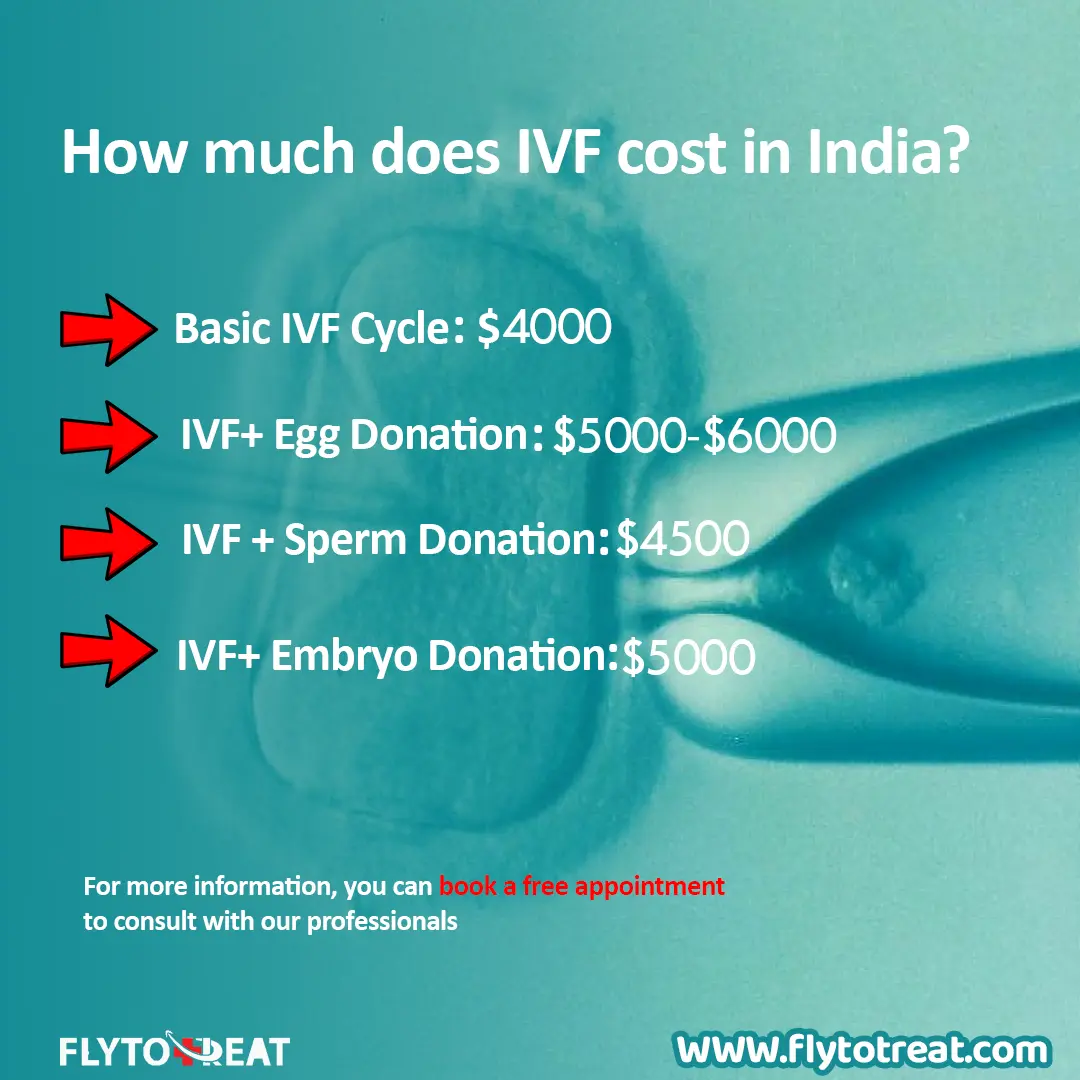
Your IVF Day 5 Journey: Everything You Need to Know About Your Expected Due Date
April 19, 2025How Much Does IVF Really Cost? Your Ultimate Guide to Understanding the Price Tag
If you’ve ever thought about in vitro fertilization (IVF), one question probably pops into your head first: How much is this going to cost me? It’s a big deal—both emotionally and financially. IVF isn’t just a medical procedure; it’s a journey that can feel like a rollercoaster, full of hope, stress, and, yes, a hefty price tag. But here’s the thing: the numbers you hear tossed around—like $10,000 or $20,000—don’t tell the whole story. There’s so much more to it, from hidden fees to surprising hacks that could save you money.
In this guide, we’re diving deep into the real cost of IVF. We’ll break it down step-by-step, uncover secrets the clinics might not advertise, and share practical tips to make it more affordable. Whether you’re just curious or ready to take the plunge, this article will give you the full scoop—plus a few things you won’t find anywhere else.
What Is IVF, Anyway?
Before we talk dollars and cents, let’s get on the same page about what IVF actually is. IVF stands for in vitro fertilization, which basically means fertilizing an egg with sperm outside the body (in a lab) and then placing the embryo into the uterus. It’s a go-to option for people struggling with infertility, same-sex couples, or single parents-to-be using donor eggs or sperm.
Think of it like baking a cake: you mix the ingredients (egg and sperm) in a special kitchen (the lab), let it “bake” for a few days, and then carefully place it where it can grow (the uterus). Except this cake costs thousands of dollars and comes with a lot more emotions.
The Big Number: How Much Does IVF Cost on Average?
Let’s cut to the chase: IVF isn’t cheap. On average, one cycle of IVF in the United States costs between $12,000 and $15,000. That’s the baseline price you’ll see quoted most often. But here’s the catch—it’s just the starting point. When you add in extras like medications, testing, and storage fees, the total can climb to $20,000 or even $30,000 per cycle. And since many people need more than one cycle to succeed, the numbers can stack up fast.
Why Such a Wide Range?
The cost depends on a ton of factors:
- Where you live: IVF in New York City or Los Angeles is pricier than in smaller towns.
- The clinic: Fancy facilities with high success rates charge more.
- Your health: If you need extra treatments (like genetic testing), it adds up.
- Extras: Medications alone can cost $3,000 to $5,000 per cycle!
Here’s a quick breakdown of what’s included in that $12,000-$15,000 “base price”:
- Doctor visits and monitoring (ultrasounds, blood tests)
- Egg retrieval (a minor surgery)
- Lab work to fertilize the egg and grow the embryo
- Embryo transfer (putting it back in the uterus)
But don’t stop reading yet—there’s a lot more to unpack.
Breaking Down the Hidden Costs of IVF
If you think the base price is all you need to budget for, think again. IVF comes with a laundry list of add-ons that can sneak up on you. Let’s shine a light on these hidden costs so you’re not caught off guard.
Medications: The Pricey Pills and Shots
IVF isn’t just about the procedure—it’s a hormonal marathon. You’ll need medications to stimulate your ovaries to produce more eggs, and those don’t come cheap. Expect to pay $3,000 to $5,000 per cycle, though it can soar to $7,000 if you need higher doses.
- Fun Fact: Some people nickname these meds “liquid gold” because they’re so expensive—and because they’re your ticket to growing those precious eggs.
- Pro Tip: Ask your doctor about generic versions or discount programs. Some pharmacies offer deals that can shave off hundreds of dollars.
Pre-IVF Testing: The Warm-Up Act
Before you even start, clinics run tests to check your fertility levels, hormones, and overall health. These can cost $1,000 to $3,000, depending on how thorough they are. For guys, add a sperm analysis for about $100 to $200.
- Real Talk: One couple I heard about spent $2,500 on tests only to find out they needed an extra procedure—another $4,000 hit before IVF even began.
Embryo Freezing and Storage: The Ice Cube Fee
Got extra embryos? Freezing them for later costs $1,000 to $2,000 upfront, plus $500 to $1,000 per year to keep them on ice. It’s like renting a tiny freezer for your future babies.
Genetic Testing: The High-Tech Option
Want to screen your embryos for genetic issues? Preimplantation Genetic Testing (PGT) adds $3,000 to $6,000 to your bill. It’s optional but popular for older parents or those with a family history of genetic conditions.
Donor Eggs or Sperm: The VIP Upgrade
If you’re using donor eggs, tack on $15,000 to $25,000 per cycle. Donor sperm is cheaper, around $500 to $1,000. These costs cover finding and screening the donor—think of it like hiring a superstar teammate for your baby-making squad.

Does Insurance Cover IVF? The Million-Dollar Question
Here’s where it gets tricky: insurance coverage for IVF is a mixed bag. Only 19 states in the U.S. have laws requiring some form of fertility treatment coverage as of 2025, and even then, IVF isn’t always included. If you’re lucky, your plan might cover part of the cost—like monitoring or meds—but full coverage is rare.
- Good News: States like California and New York have pushed for better coverage lately. In 2024, California passed a law making insurance companies cover IVF for more people, though it’s still rolling out.
- Bad News: Even with coverage, you might still pay $5,000 to $10,000 out of pocket after copays and deductibles.
How to Check Your Coverage
- Call your insurance provider and ask: “Does my plan cover IVF, and what’s included?”
- Get it in writing—verbal promises don’t hold up.
- Look for loopholes: Some plans only cover “diagnostic” tests, not the actual treatment.
Dr. Emily Carter, a fertility specialist in Chicago, says, “Insurance is the Wild West of IVF. Patients are shocked to learn their ‘great plan’ covers almost nothing. Always double-check.”
How Many Cycles Do You Need? The Success Rate Factor
IVF isn’t a one-and-done deal for most people. Success rates depend on age, health, and a bit of luck. Here’s what the latest data (2025) shows:
- Under 35: 40-50% success per cycle
- 35-37: 30-40%
- 38-40: 20-30%
- Over 40: 10-15%
So, if you’re 38, you might need 2-3 cycles to get pregnant, pushing your total cost to $40,000-$60,000. Younger folks might luck out with one cycle, but it’s smart to budget for at least two.
A Real-Life Example
Meet Sarah, a 34-year-old teacher from Texas. She budgeted $15,000 for one cycle, but it failed. Her second cycle worked, but with meds and testing, she spent $32,000 total. “I wish I’d known to plan for more than one try,” she said. “It’s not just the money—it’s the emotional toll.”
Surrogacy vs. IVF: A Cost Comparison
Sometimes IVF leads to surrogacy if carrying a pregnancy isn’t an option. But brace yourself: surrogacy costs $100,000 to $200,000, making IVF look like a bargain. That price includes:
- IVF for the surrogate
- Legal fees
- Surrogate compensation (around $30,000-$50,000)
If surrogacy’s on your radar, start saving now—it’s a whole different ballgame.

Sneaky Ways Clinics Hook You In
Ever notice how some clinics advertise “IVF for $10,000!”? Sounds amazing, right? But dig deeper, and you’ll see it’s usually a bait-and-switch. That price might exclude meds, testing, or follow-ups. By the time you’re done, you’re back at $20,000.
Red Flags to Watch For
✔️ “Low-cost IVF” that doesn’t list what’s included
❌ Vague promises like “guaranteed success” (no one can promise that)
✔️ Pressure to sign up fast without a clear breakdown
Ask for an itemized quote upfront. If they dodge the question, run.
Creative Ways to Pay for IVF
IVF’s a big investment, but you don’t have to drain your savings. Here are some hacks to make it work:
1. Fertility Grants and Scholarships
Nonprofits like Baby Quest and Starfish Foundation offer grants up to $15,000. They’re competitive, but worth a shot—especially if you’ve got a compelling story.
- Tip: Write a heartfelt application. Share your journey—it’s what sets you apart.
2. IVF Financing Plans
Many clinics offer payment plans with 0% interest for 12-24 months. Others partner with companies like Prosper Healthcare Lending, where you can borrow $5,000-$50,000 at reasonable rates.
3. Crowdfunding Your Baby
Sites like GoFundMe have helped tons of couples raise IVF cash. One couple I read about raised $8,000 by sharing their story with friends and family. It’s not just money—it’s a support network.
4. Tax Breaks
Good news: IVF expenses can be tax-deductible as medical costs if they exceed 7.5% of your income. Save those receipts and talk to a tax pro.
5. Shop Around Internationally
IVF in places like Mexico or Spain costs $5,000-$8,000 per cycle, including meds. Add travel costs, and it’s still cheaper than the U.S. Just research the clinic’s success rates first.
The Emotional Cost: What Money Can’t Buy
Let’s get real—IVF isn’t just about dollars. It’s exhausting. The injections, the waiting, the hope, and the heartbreak if it fails. One study from 2024 found that 60% of IVF patients experience anxiety or depression during the process.
- Self-Care Tip: Build a support squad. Friends, a therapist, or even an online group can keep you sane.
Dr. Michael Rivera, a psychologist specializing in fertility, notes, “The financial stress of IVF often amplifies the emotional strain. Couples need to talk openly about both.”
Latest IVF Research: What’s New in 2025?
Science is moving fast, and 2025 has brought some game-changers:
- AI-Powered Embryo Selection: Clinics are using artificial intelligence to pick the healthiest embryos, boosting success rates by up to 10%. It adds about $500 to the cost but could save you a cycle.
- At-Home Monitoring: New devices let you track hormones at home, cutting monitoring costs by $1,000-$2,000.
- Cheaper Meds: A 2024 study found compounded medications (custom-made by pharmacies) can slash drug costs by 20-30%.
Ask your clinic if they’re using these innovations—they’re not standard everywhere yet.

IVF Around the World: A Global Price Check
Curious how the U.S. stacks up? Here’s a quick look:
- Canada: $10,000-$12,000 per cycle
- UK: £5,000-£8,000 (~$6,500-$10,000 USD), sometimes free via NHS if you qualify
- India: $3,000-$5,000, a budget-friendly hotspot
- Australia: $8,000-$12,000, with government rebates up to $5,000
Traveling for IVF (aka “fertility tourism”) is growing—40% of patients in some countries are foreigners chasing lower prices.

Long-Tail Keywords: Answering Your Niche Questions
Let’s tackle some specific questions you might be Googling:
How Much Does IVF Cost Without Insurance?
Without coverage, you’re looking at $15,000-$25,000 per cycle, including meds and basic add-ons. It’s the full out-of-pocket hit.
How Much Is IVF for Twins?
Good news: aiming for twins doesn’t cost extra upfront. You just transfer two embryos (same price). But if it works, double diapers and cribs will hit your wallet later.
What’s the Cost of IVF with Donor Eggs?
Add $15,000-$25,000 to the base price, totaling $30,000-$40,000. It’s pricey because donors get compensated, and the process is more complex.
How Much Does Mini-IVF Cost?
Mini-IVF uses fewer meds, dropping the price to $5,000-$7,000 per cycle. It’s less intense but has lower success rates—great for younger patients with good egg reserves.
Step-by-Step: Planning Your IVF Budget
Ready to crunch the numbers? Here’s a simple guide:
- Call Your Clinic: Get a base price and ask what’s included.
- Estimate Meds: Budget $3,000-$5,000, or ask your doc for a personalized quote.
- Add Extras: Factor in testing ($1,000-$3,000), freezing ($1,000-$2,000), etc.
- Check Insurance: See what’s covered and subtract it.
- Plan for Two Cycles: Double your total as a safety net.
Example Budget:
- Base: $12,000
- Meds: $4,000
- Testing: $2,000
- Freezing: $1,000
- Total: $19,000 x 2 cycles = $38,000
Insider Secrets Clinics Won’t Tell You
After digging into tons of stories and research, here are some gems:
- Multi-Cycle Discounts: Some clinics offer packages (e.g., 3 cycles for $30,000). It’s a gamble, but it can save you thousands.
- Refund Programs: Pay upfront (say, $25,000), and get money back if it fails after a set number of tries. Risky but tempting.
- Shared Risk: Donate unused embryos to research for a discount—ethically tricky, but it’s out there.
Dr. Lisa Nguyen, a fertility expert in Seattle, advises, “Ask about every possible discount. Clinics won’t volunteer them—you have to push.”
IVF Myths Busted
Let’s clear up some confusion:
- Myth: IVF always works on the first try.
Truth: Only about 1 in 3 cycles succeed, depending on age. - Myth: It’s only for rich people.
Truth: Financing and grants make it doable for more folks. - Myth: Insurance never covers it.
Truth: Partial coverage is more common than you think—check your plan!
Your IVF Action Plan: Next Steps
Feeling overwhelmed? Here’s how to start:
- Research Clinics: Compare prices and success rates online.
- Talk to Your Doctor: Get a tailored cost estimate.
- Explore Funding: Apply for grants or set up a payment plan.
- Prep Emotionally: Line up support for the ride ahead.
Let’s Talk: Your Turn!
IVF is a wild journey, and no two stories are the same. What’s on your mind? Have you tried IVF, or are you just dipping your toes in? Drop a comment below—I’d love to hear your thoughts, questions, or even your wildest baby-making dreams. Let’s keep this convo going!
